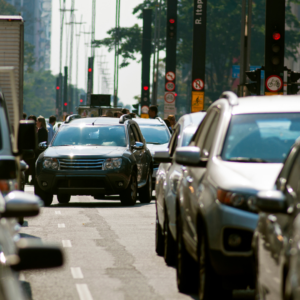Left turns across traffic are one of the more complicated moves for drivers; they require good timing, clear visibility, and smart decision-making. Left-turn accidents can also be hard to sort out because who’s to blame is often unclear. This uncertainty can lead to disputes between drivers, insurance companies, and sometimes even in court. If you have been injured due to a left turn accident, our experienced personal injury lawyers at Regan Zambri Long can help. Call us today for a free consultation.
 Why Left Turns Are More Dangerous
Why Left Turns Are More DangerousThe actions of other drivers can complicate left-turning drivers. They might switch lanes without warning, speed up suddenly, or even run red lights. These unexpected moves can surprise drivers trying to make left-hand turns, leading to accidents. Drivers need to watch out for other vehicles, pedestrians, and sometimes even cyclists all at once. These multiple checkpoints make left turns a common spot for accidents, especially for newer or less confident drivers.
According to The U.S. Department of Transportation, 1 in 4 crashes happen at busy intersections because of left turns. These accidents often occur because drivers turning left don’t wait for oncoming cars to pass, leading to bad accidents. As a left-turning driver, it’s always best to yield to an oncoming vehicle until you are sure the road is clear before you turn, and you should always make sure to signal.
Left turns are notoriously tricky because it’s hard to tell how fast other cars are coming or how far away they are; this becomes a problem when you turn when a car is closer or faster than you estimated.
To safely gauge the speed of oncoming traffic:
Another danger of left turns is that you often can’t see clearly. Things like oncoming cars, parked vehicles, buildings, trees, and bad weather can block your view, creating blind spots. These obstacles make it hard to judge if it’s safe to turn, increasing the chances of a turn crash.
Making a left turn without special traffic signs or signals is called an unprotected left. This happens at places with no stop signs or lights, or even where lights exist but lack a green arrow for turning. Drivers face challenges as they must wait for a safe gap in oncoming cars, sometimes across multiple lanes. These turns require extra caution, good judgment, and careful timing. Whether there’s a dedicated lane or not, motorists need to be alert and patient. The task becomes trickier when crossing several streams of traffic, demanding sharp focus and quick decision-making from anyone attempting this maneuver.
The National Highway Traffic Safety Administration found that more than 1 out of 3 car crashes happen at intersections, with many involving a left-turning vehicle. Common left-hand turning driver accidents are often at busier intersections:
These accidents can cause serious injuries, such as broken bones, neck and back injuries, concussions, or worse. Other serious injuries can include:
Since a “T-bone” accident hits the side of the car, passengers are more likely to get hurt because the sides of a vehicle aren’t as strong as the front or back. The vehicle side doesn’t have as much protection, so when another car crashes into it, people inside are more vulnerable to severe injuries. These injuries can include broken bones, head injuries, or internal damage, making T-bone accidents especially dangerous for those in the car (Bieber, Forbes, 2024).
Evidence like witness statements, traffic camera footage, or police reports can help determine who’s at fault. The particular rules can vary depending on where you live. It’s always best to talk to a local lawyer or your insurance company for specific advice.
Unfortunately, left-turn car accidents are all too common. If you find yourself in one, here’s what you should do:
Remember, in these situations, say less and document more. Your words and actions right after the crash can impact the outcome of your personal injury case later. Contact our car accident attorneys at Zambri Regan Long for a free case evaluation — we can steer you in the right direction and help you get the compensation and consideration you deserve.